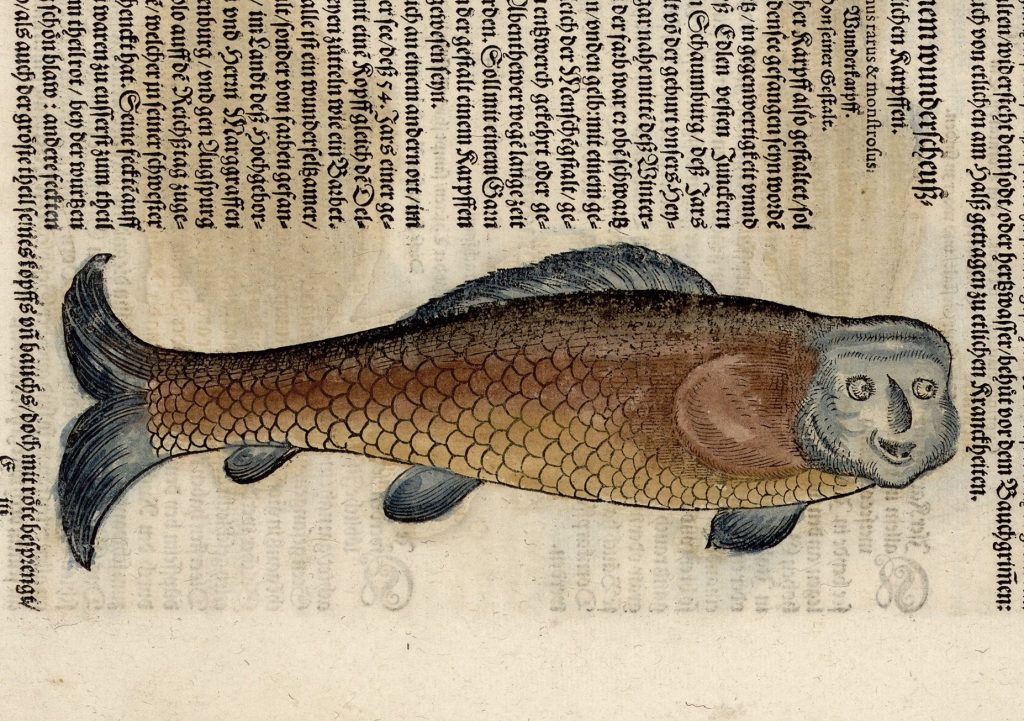 the depths of the world’s oceans, a group of fascinating and peculiar creatures known as human-face fish species have captured the attention of scientists and underwater enthusiasts alike. With their strikingly human-like facial features, these enigmatic creatures have long puzzled researchers, leading to an exploration of their evolutionary history, unique adaptations, and ecological significance. In this article, we embark on a journey to delve into the remarkable story of human face fish species, shedding light on their origins, behavior, and the mysteries they hold.
the depths of the world’s oceans, a group of fascinating and peculiar creatures known as human-face fish species have captured the attention of scientists and underwater enthusiasts alike. With their strikingly human-like facial features, these enigmatic creatures have long puzzled researchers, leading to an exploration of their evolutionary history, unique adaptations, and ecological significance. In this article, we embark on a journey to delve into the remarkable story of human face fish species, shedding light on their origins, behavior, and the mysteries they hold.
The Curious Faces Beneath the Waves
Human face fish species, also known as pareidolia fish, are a group of marine organisms that possess facial patterns resembling human faces. These unique markings, often consisting of eyes, mouths, and other distinctive features, give these fish an uncanny resemblance to human expressions. This striking resemblance has fascinated scientists and sparked intrigue among the general public.
One well-known example of a human-face fish species is the “triggerfish.” Its distinct facial pattern, with eyes positioned near the top of its head, gives the appearance of a human face in profile. Other species, such as the “anglefish” and the “parrotfish,” exhibit similar facial patterns that evoke anthropomorphic associations.
The resemblance of these fish to human faces is not merely coincidental but serves a vital purpose. The intricate facial markings play a role in camouflage, predator deterrence, and communication within their respective environments. Understanding the evolutionary significance of these facial patterns is key to unraveling the remarkable story of human face fish species.
The Evolutionary Enigma
The evolutionary origins of human face fish species have long been a subject of scientific inquiry. While the specific reasons behind their facial patterns are not yet fully understood, several hypotheses have been proposed. One theory suggests that the resemblance to human faces may serve as a form of mimicry, allowing these fish to blend in with their surroundings and confuse potential predators.

Another hypothesis suggests that the facial markings of human face fish species may play a role in inter-species communication and recognition. Just as humans use facial expressions to convey emotions and establish social bonds, these fish may utilize their facial patterns to convey messages and interact with others of their kind.
Further studies on the genetics and developmental biology of these fish are necessary to unravel the genetic basis of their facial patterns. By examining the underlying mechanisms that contribute to the formation of their unique facial markings, scientists hope to gain deeper insights into the evolutionary history and ecological significance of human face fish species.
Ecological Significance and Adaptations
Beyond their remarkable appearance, human face fish species play important roles in marine ecosystems. These fish have adapted to thrive in various habitats, including coral reefs, rocky shores, and seagrass beds. Their unique facial patterns, coupled with other physical adaptations, contribute to their survival and success in these environments.
The facial patterns of human face fish species, particularly their position and arrangement of eyes, enhance their field of vision, allowing them to monitor their surroundings more effectively. This adaptation provides them with a strategic advantage in detecting predators or potential prey, contributing to their survival in competitive marine ecosystems.
Moreover, the striking resemblance of these fish to human faces has captivated the public’s attention and raised awareness about the importance of marine conservation. As ambassadors for their ecosystems, these charismatic species serve as reminders of the incredible diversity and beauty of marine life, prompting efforts to protect their habitats and promote sustainable practices.
Conservation and Future Research
The study and conservation of human face fish species are vital for preserving marine biodiversity and understanding the intricate relationships within marine ecosystems. As human activities increasingly impact marine habitats, it is crucial to recognize the ecological significance of these unique fish and protect their natural habitats from pollution, overfishing, and habitat destruction.
Future research endeavors should focus on further understanding the behavior, reproductive biology, and ecological roles of human face fish species. Investigating their interactions with other species and the impact of environmental factors on their populations will provide valuable insights into their conservation needs and inform effective management strategies.
In addition, public engagement and education play a crucial role in raising awareness about the importance of marine biodiversity and the conservation of unique species like human face fish. By fostering a sense of wonder and appreciation for these extraordinary creatures, we can inspire individuals to become advocates for marine conservation and contribute to the preservation of our oceanic treasures.
The remarkable story of human-face fish species continues to captivate scientists and enthusiasts alike. Their uncanny resemblance to human faces, intriguing evolutionary history, and ecological adaptations paints a fascinating picture of the wonders that exist beneath the waves. By unraveling their enigmatic tale, we gain a deeper appreciation for the intricate beauty and biodiversity of our oceans. The study and conservation of these unique creatures serve as a reminder of the importance of protecting marine ecosystems and preserving the remarkable diversity of life that thrives within them.
Avid Writer with invaluable knowledge of Humanity!
Upcoming historian with over 30 million views online.
“You make your own life.”





